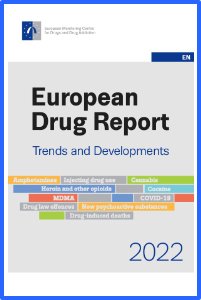By Safer Communities Directorate
Executive Summary
There is an ongoing cost of living crisis in Scotland, and the rest of the United Kingdom, which is characterised by higher energy costs, higher food and other household costs and real term pay decreases. This paper focuses on the relationship between this cost crisis and crime in Scotland.
The academic evidence is by no means conclusive in favour of a certain economic variable having a relationship with overall or total crime. This is an important finding as it dispels the idea that worsening economic conditions will inevitably result in a rise in crime.
Unlike the recessions of the 1980s, the 1990s and 2008 which brought periods of higher unemployment and decreasing inflation, the current cost crisis is characterised by increasing levels of inflation, combined with low levels of unemployment. Therefore, whilst the existing literature helps us to understand how previous economic shifts have impacted upon crime in the past, any attempts to use this literature to predict the impact of the cost crisis on crime is methodologically unadvisable. We must rely on present day data to monitor crime trends during this current period of cost crisis in Scotland.
Gross Domestic Product is too broad a measure when it comes to determining the impact of the economy on crime. Therefore, we must specify and explore how changes in specific economic variables impacts upon crime.
For example, analysis undertaken by Scottish Government statisticians explored the relationship between levels of unemployment in Scotland, all recorded crime, and some specific crime types from 1971 until the present day. The analysis found a strong positive linear correlation between unemployment and overall recorded crime, housebreaking and, theft of a motor vehicle. Considering forecasted increases in unemployment, this relationship is noteworthy.
We know from the academic evidence that relative falls in the wages of low wage workers increases rates of property and violent crime. This finding has present-day relevance given recent real-term falls in wages as a result of the cost crisis.
The academic evidence also tells us that increases in inequality and poverty rates increase the rates of property crime and violent crime. However, it is not yet clear how these two economic variables are being affected by the cost crisis and therefore if, and how, they may impact upon crime.
Non-economic factors play a significant role with regard to fluctuations in overall crime rates as well as rates of specific crime types and are impossible to precisely disentangle from the economic factors that impact upon crime. Such factors include the COVID-19 pandemic, the number of police officers, and population demographics.
For example, analysis undertaken by Scottish Government statisticians found a strong, positive, linear correlation between the proportion of young men (16-24) in the population and overall recorded crimes of housebreaking and theft of a motor vehicle. Population forecasts tell us that over the next 10 years the size of this group is projected to steadily increase.
This paper's case study on housebreaking further explores this phenomenon of economic and non-economic factors impacting upon the rates of specific crimes. The case study suggests that housebreaking, an acquisitive crime, may not be susceptible to the cost crisis. This contrasts with findings from the academic evidence review and suggests the presence of non-economic factors that are acting to limit any rise in housebreaking.
That being said, analysis demonstrates a rise in overall recorded crime and Crimes of Dishonesty that may be the result of cost crisis pressures. It is unclear, however, whether crime is simply returning to pre-pandemic levels. Of particular note is the large uplift in shoplifting, which increased by 21% in the year ending June 2023, when compared to the previous year.
With regard to next steps, a second occasional paper will be published in 2024 which will draw on the latest Police Recorded crime data and the Scottish Crime and Justice Survey data and will focus on the impact of the cost crisis on violent crime and domestic abuse in addition to revisiting the crime types identified in this paper.
Edinburgh: Scottish Government, Social Research, 2023. 28p.





















